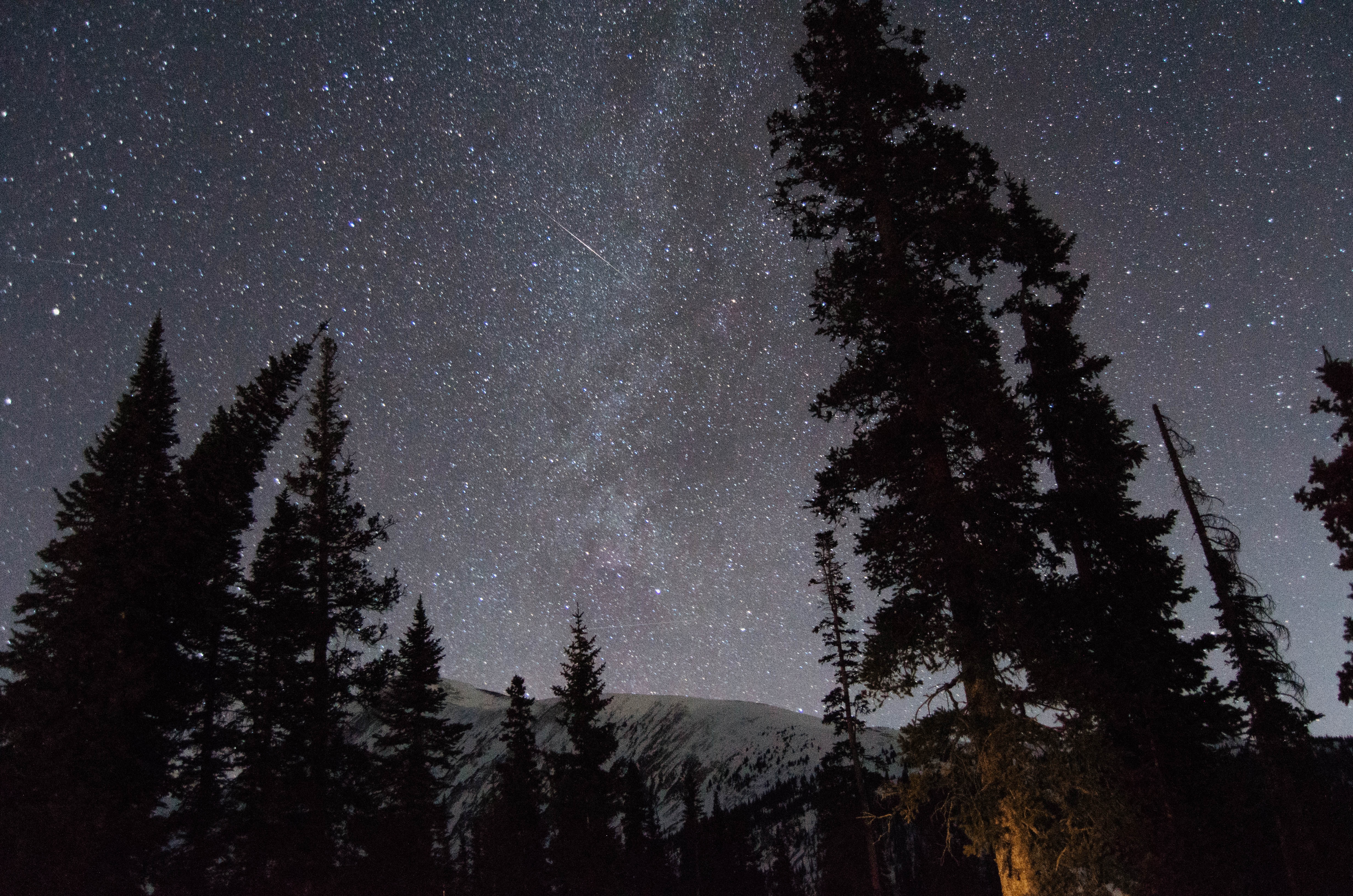
Craveology Cafe and the North Star Science Store are temporarily closed for renovation.

The bright Perseids are perhaps the most popular meteor shower of the year!
This is a complicated year for watching the Perseid meteor shower, because the evening sky has a roughly close-to-full Moon in it, making it more difficult to catch the faint “shooting stars.” So if you can wait until the Moon sets, you should have better viewing in the pre-dawn darkness. Spectators can expect to see around 10-15 meteors per hour or maybe slightly more on the peak on Monday and Tuesday, August 12-13, according to NASA.
To best see the Perseids, go to the darkest possible location and lean back to observe as much sky as possible directly above you. The rates of Perseids visible will increase from about 10 p.m. in your local time zone all the way through dawn, so the later you can look the better. Earlier in the night there will be fewer meteors, but the ones that appear will have longer tails as they graze along more of the atmosphere. Those in southern latitudes can look toward the northeast to see more meteors.
Image credit: NASA/JPL-Caltech
The Perseid meteors are cosmic dust left over from a regularly returning comet, called Swift-Tuttle (after the two astronomers who first discovered it). The comet itself returns to the inner solar system every 130 years or so; it was last here in 1992. During each pass, it leaves dirt and debris behind, and it's this series of long dirt and dust streams that we encounter every August. Some scientists who study comets and meteors are predicting that we might briefly encounter an especially crowded part of the debris stream this time.
Each flash you see is a bit of material from the comet hitting the Earth’s atmosphere and getting heated up (and heating up the air around it) as it speeds through our thick atmosphere. Both the superheated dust and dirt and the heated air contribute to the visible light we observe. Since comets are leftovers from the early days of our solar system, you can tell yourself (or your kids) that each flash of light is the “last gasp” of a bit of cosmic material that formed some 5 billion years ago!